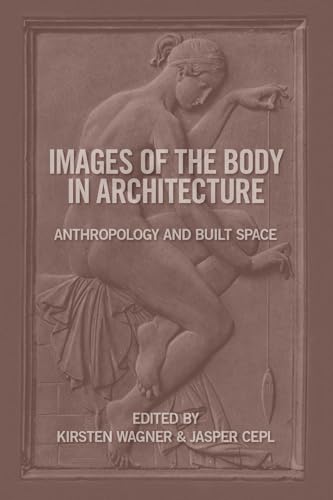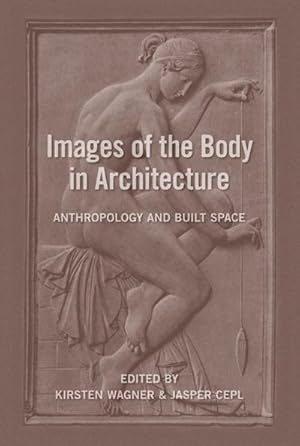images body architecture anthropology (3 Ergebnisse)
Produktart
- Alle Produktarten
- Bücher (3)
- Magazine & Zeitschriften
- Comics
- Noten
- Kunst, Grafik & Poster
- Fotografien
- Karten
-
Manuskripte &
Papierantiquitäten
Zustand
Einband
Weitere Eigenschaften
- Erstausgabe
- Signiert
- Schutzumschlag
- Angebotsfoto (1)
Land des Verkäufers
Verkäuferbewertung
-
Images of the Body in Architecture: Anthropology and Built Space. (Englisch)
Verlag: Ernst Wasmuth Verlag, Tübingen, 2014
ISBN 10: 3803007313ISBN 13: 9783803007315
Anbieter: Antiquariat >Im Autorenregister<, Köln, NRW, Deutschland
Buch
Mit 200 s/w Abbildungen. Gewicht 1,2 kg, internationaler Versand ausserhalb der EU mit erheblichen Mehrkosten. Mwst.: 7%. Wir verschicken keine Bestellbestätigung, Versand wenn möglich am Tag des Bestelleingangs. Gewicht in Gramm: 1200 Groß Oktav, 394 S. Englischsprachige Ausgabe OPbd. Sehr Guter Zustand Gebundene Ausgabe.
-
Images of the Body in Architecture. Anthropology and Built Space.
Verlag: Berlin: Wasmuth Vlg. 2013., 2013
Anbieter: Antiquariat Bergische Bücherstube Mewes, Overath, Deutschland
360 S., mit ca. 190 Abb. Kart. *neuwertig* Der Band Images of the Body in Architecture. Anthropology and Built Space" thematisiert das Verhältnis zwischen dem menschlichen Körper und dem gebauten Raum, das die Architektur in Praxis und Theorie auf elementare Art und Weise bestimmt. Mit den drei Schwerpunkten zum anthropometrischen, physiologischen und disziplinierten Körper wird an die jüngere Körpergeschichte angeschlossen, deren Ergebnisse erst in Ansätzen auf die Architektur bezogen worden sind. Intendiert ist eine kritische Anthropologie der Architektur. Dabei wird zum einen nach den der Architektur historisch zugrunde liegenden Körperbildern gefragt, nach ihren Visualisierungen und ihrer Bedeutung für den gebauten Raum. Zum anderen wird die Architektur selbst als eine soziale Praxis betrachtet, die in ihrer Materialität und räumlichen Ordnung den Körper bedingt. Der Band versammelt Beiträge aus der Kulturwissenschaft, Architekturtheorie, Kunstgeschichte, Medizingeschichte, Soziologie und Philosophie. The essays collected in this volume are intended to stimulate research in the anthropology of architecture on the basis of a critical history of the body and its cultural constructions. The analogy between architecture and the human body is rooted in the fundamental impact the latter has on ordering, symbolizing, and interpreting the world. Correspondingly, the metaphorical conceptualization of the built environment in terms of the human body was already practiced in early cultures and has determined architectural theory since antiquity. While the architectural treatises of early modern times vividly imagine anthropomorphic and anthropometric figures, they seem to be overcome by an architectural theory that is based on purely rational as well as mechanical laws. However, these figures were never totally abandoned, and Le Corbusier s Modulor is only one, if not the most prominent example, for their ongoing reception and transformation in modern times. The human sciences of the 19th century played a significant role in this process. Physiology and psychology brought about not only new experimental devices for analyzing the human body and its physiological functions, but also new images of the body that directly went into aesthetics, art history, and architectural theory. This new understanding of the body had a large impact on the production and reception of modern architecture. Due to this background the arts eventually became anthropologically grounded. With contributions by Tobias Cheung, Scott Drake, Günter Feuerstein, Tanja Jankowiak, Eckhard Leuschner, Harry Francis Mallgrave, Indra Kagis McEwen, Irene Nierhaus, Philipp Osten, Heleni Porfyriou, Paolo Sanvito, Christoph Schnoor, Sven-Olov Wallenstein, Frank Zöllner, Beatrix Zug-Rosenblatt, and others.
-
Images of the Body in Architecture : Anthropology and Built Space
Verlag: Wasmuth Berlin Dez 2014, 2014
ISBN 10: 3803007313ISBN 13: 9783803007315
Anbieter: AHA-BUCH GmbH, Einbeck, Deutschland
Buch
Buch. Zustand: Neu. Neuware - Der Band Images of the Body in Architecture. Anthropology and Built Space thematisiert das Verhältnis zwischen dem menschlichen Körper und dem gebauten Raum, das die Architektur in Praxis und Theorie auf elementare Art und Weise bestimmt. Mit den drei Schwerpunkten zum anthropometrischen, physiologischen und disziplinierten Körper wird an die jüngere Körpergeschichte angeschlossen, deren Ergebnisse erst in Ansätzen auf die Architektur bezogen worden sind. Intendiert ist eine kritische Anthropologie der Architektur. Dabei wird zum einen nach den der Architektur historisch zugrunde liegenden Körperbildern gefragt, nach ihren Visualisierungen und ihrer Bedeutung für den gebauten Raum. Zum anderen wird die Architektur selbst als eine soziale Praxis betrachtet, die in ihrer Materialität und räumlichen Ordnung den Körper bedingt. Der Band versammelt Beiträge aus der Kulturwissenschaft, Architekturtheorie, Kunstgeschichte, Medizingeschichte, Soziologie und Philosophie. The essays collected in this volume are intended to stimulate research in the anthropology of architecture on the basis of a critical history of the body and its cultural constructions. The analogy between architecture and the human body is rooted in the fundamental impact the latter has on ordering, symbolizing, and interpreting the world. Correspondingly, the metaphorical conceptualization of the built environment in terms of the human body was already practiced in early cultures and has determined architectural theory since antiquity. While the architectural treatises of early modern times vividly imagine anthropomorphic and anthropometric figures, they seem to be overcome by an architectural theory that is based on purely rational as well as mechanical laws. However, these figures were never totally abandoned, and Le Corbusier s Modulor is only one, if not the most prominent example, for their ongoing reception and transformation in modern times. The human sciences of the 19th century played a significant role in this process. Physiology and psychology brought about not only new experimental devices for analyzing the human body and its physiological functions, but also new images of the body that directly went into aesthetics, art history, and architectural theory. This new understanding of the body had a large impact on the production and reception of modern architecture. Due to this background the arts eventually became anthropologically grounded. With contributions by Tobias Cheung, Scott Drake, Günter Feuerstein, Tanja Jankowiak, Eckhard Leuschner, Harry Francis Mallgrave, Indra Kagis McEwen, Irene Nierhaus, Philipp Osten, Heleni Porfyriou, Paolo Sanvito, Christoph Schnoor, Sven-Olov Wallenstein, Frank Zöllner, Beatrix Zug-Rosenblatt, and others. On the editors: Kirsten Wagner is professor for cultural studies and communication science at the University of Applied Sciences in Bielefeld. She studied art history, German literature, sociology, and cultural studies in Braunschweig, Oldenburg, and Berlin. She received a PhD for a dissertation on the spatialization of knowledge in the computer era. From 2002 to 2010 she was a research fellow at the Institute for Cultural Studies at Humboldt-Universität zu Berlin. Her research focuses on images of the body in architecture, the theory and history of spatial knowledge organization, aesthetics and theories of perception in modernity, and the image of the city. Jasper Cepl is assistant professor at the Technische Universität Berlin, where he has taught architectural theory since 2003. He studied architecture in Aachen and Berlin. He is the author of Oswald Mathias Ungers. Eine intellektuelle Biographie (Cologne 2007), for which he received a PhD in 2006. Having published widely on the history and theory of architecture, he has also, among other things, edited a monograph on Hans Kollhoff in 2004 and the anthology Quellentexte zur Architekturtheorie (with Fritz Neumeyer) in 2002.




